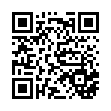biomech (PDF)
File information
This PDF 1.4 document has been generated by Writer / LibreOffice 4.4, and has been sent on pdf-archive.com on 12/06/2015 at 02:56, from IP address 184.145.x.x.
The current document download page has been viewed 516 times.
File size: 330.36 KB (3 pages).
Privacy: public file



File preview
Bio-mechanical Analysis: High Jump
A high jump can be broken down into three phases: run-up, takeoff and flight.
At run-up, a preparatory phase for high jumpers run in curves to generate the right amount of angular
momentum in order to perform in the air the rotations necessary for a proper bar clearance.
In the last two or three stride of of the run-up, the high jumper should lower the hips without losing a
significant amount of speed, and this helps to lower the center of mass for start of the takeoff phase,
the instant when the takeoff foot leave the ground. Before the takeoff, the hinge moment occurs. It's
when part of a moving object stop creating a momentum transfer the center of mass from low to high
resulting an upward momentum of the beginning of the flight phase. During the takeoff phase, the
athlete produces angular momentum about a horizontal axis perpendicular to the final direction of the
run-up.
After takeoff, the center of gravity follows a fixed path called a parabola. The parabola should reach the
maximum possible peak height.
In a Fosbury FIop, the rotation consists of a "twist" (a
rotation around the longitudinal axis of the body created
from running on the curve forces body to rotate) which
turns the back of the athlete toward the bar, and a
"somersault" (a rotation around a transverse axis
creating from the knee drive before take off) which
makes the shoulders go down and the knees go up.
Two motions produces a twisting somersault rotation
which leads to a face-up layout position at the peak of
the jump. Combined with an arched configuration of the
body, this position allows the athlete to clear a bar set at
a height that is near the maximum height. Where the
center of mass is below the body. This is result from the
continuation of momentum through the previous
phases.
Tucking the chin is also important in the last
phase. Good timing for tucking the chin
helps the hips to drop and feet to rise to
clear the bar.
The most frequent problems in the rotation
of a Fosbury-fIop high jump are due to
insufficient amounts of somersault or twist
rotation after takeoff. An insufficient amount
of somersault rotation (sometimes
misleadingly described as "stalling") makes it
tucking the chin
difficult for the legs to clear the bar; an
insufficient amount of twist rotation produces a tilted position of the athlete at the peak of the jump,
with the hip of the lead leg lower than the hip of the takeoff leg.
Ankle, knee, hip, shoulder and elbow joints have being used mostly throughout.
The planes the limbs are moving through are saggital and frontal. In the saggital plane there is flexion of
the knee, extension of the hip, trunk, and cervical. In the frontal plane you have abduction of the arms.
The muscles in the thigh, the quadriceps and hamstrings perform movement of knee joints while
runing. At the hip, the gluteus maximus produces the movement of concentric hip extension assisted by
the hamstring groups. Shoulder extensor muscle group help shoulder joints do a cicumduction before
take off. The quadriceps muscle help the athlete push off the ground. Hamstring flex the knee, and
during the high jump it restarts the leg turnover. While jumping, gastrocnemius muscle extend as the
knee extensors from the knee make the ankle joint perform dorsiflexion then plantar flexion motion at
sagittal plane. Retraction of chin to elevate hip and erector spinae muscles are used to generate force
to get the body over the bar. Once the athlete’s body is over the bar, they abduct their arms and then
legs to slow their momentum.
URL
http://www.coachr.org/rotation.htm
https://www.youtube.com/watch?v=wewCT7fldPA
http://www.joper.org/JOPER/1425453023JOPER09.pdf
http://sportsbiomech.com/Books/Vertical%20Jump%20Biomechanical%20Analysis%20and.pdf
http://users.rowan.edu/~griffi98/Movement_Analysis_Paperupdated.docx
http://drkellybrooks.blogspot.ca/2013/06/sports-movement-efficiency-and-planes.html
Download biomech
biomech.pdf (PDF, 330.36 KB)
Download PDF
Share this file on social networks
Link to this page
Permanent link
Use the permanent link to the download page to share your document on Facebook, Twitter, LinkedIn, or directly with a contact by e-Mail, Messenger, Whatsapp, Line..
Short link
Use the short link to share your document on Twitter or by text message (SMS)
HTML Code
Copy the following HTML code to share your document on a Website or Blog
QR Code to this page

This file has been shared publicly by a user of PDF Archive.
Document ID: 0000271335.